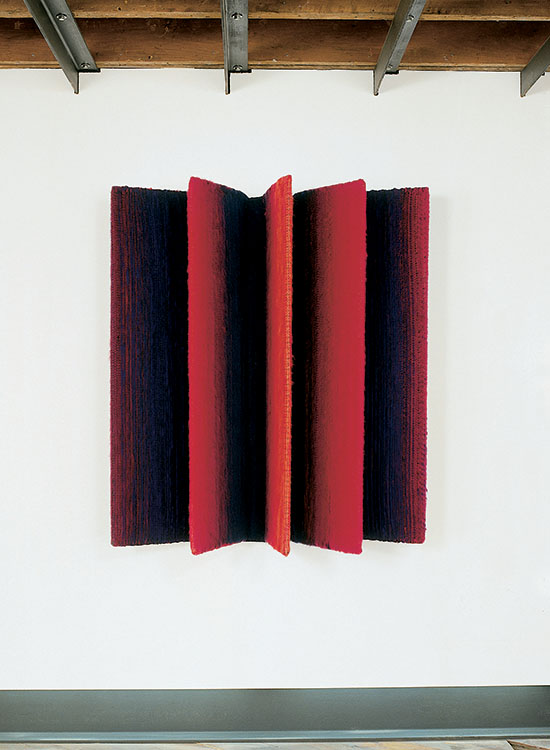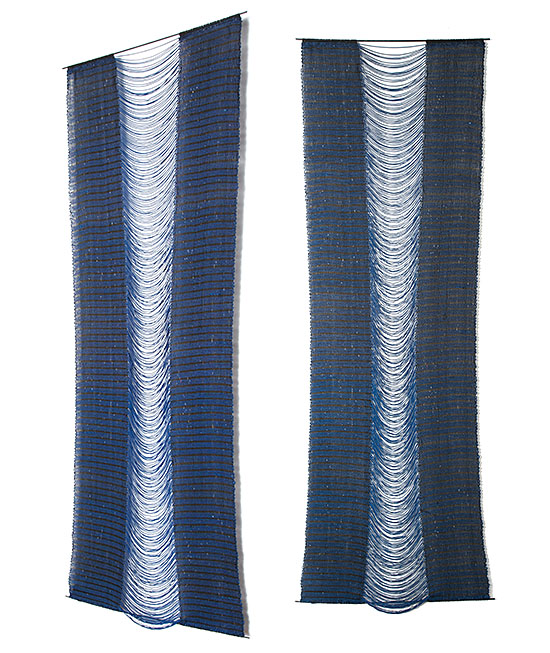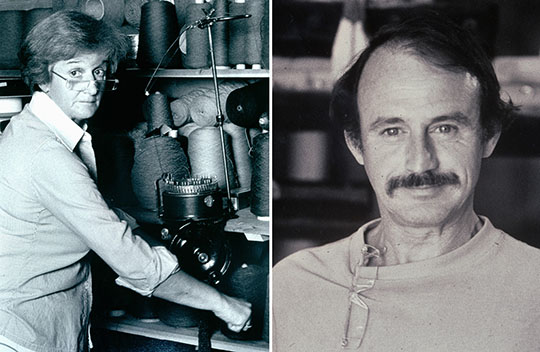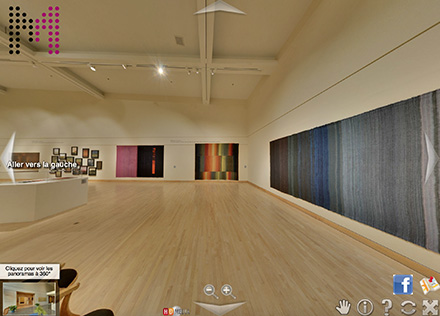After a few-year hiatus, browngrotta arts will return to the Sculpture, Objects, and Functional Art Exposition at the Navy Pier in Chicago next month. We’ll be reprising our most recent exhibition, Influence and Evolution: Fiber Sculpture…then and now, with different works for a number of artists, including Naoko Serino, Kay Sekimachi, Anda Klancic, Ritzi Jacobi, Randy Walker, Mariette Rousseau-Vermette, Carolina Yrarrázaval and Lenore Tawney. Other artists whose work will be featured in browngrotta arts’ exhibit are Magdalena Abakanowicz, Adela Akers, Lia Cook, Sheila Hicks, Masakazu Kobayashi, Naomi Kobayashi, Luba Krejci, Jolanta Owidzka, Ed Rossbach, Sherri Smith, Carole Fréve, Susie Gillespie, Stéphanie Jacques, Tim Johnson, Marianne Kemp, Federica Luzzi, Rachel Max, Eduardo Portillo & Mariá Eugenia Dávila, Michael Radyk and Gizella K Warburton. SOFA will publish a related essay, Fiber Art Pioneers: Pushing the Pliable Plane by Jo Ann C. Stabb,
on the origins of the contemporary fiber movement.
Now in its 22nd year, SOFA CHICAGO is a must-attend art fair, attracting more than 36,000 collectors, museum groups, curators and art patrons to view museum-quality works of art from 70+ international galleries. After a nationwide competition, SOFA CHICAGO recently placed #7 in the USA Today Reader’s Choice 10 Best Art Events.New this year, SOFA CHICAGO will unveil a revamped floorplan created by Chicago architects Cheryl Noel and Ravi Ricker of Wrap Architecture. The re-envisioned design will create a more open and cohesive show layout, allowing visitors to explore the fair in a more engaging way. Changes include a new, centrally located main entrance where browngrotta arts’ booth, 921, will be located. Cheryl Noel of Wrap Architecture adds, “The most effective urban contexts contain distinct places within the larger space, corridors with visual interest and clear paths with fluid circulation. We believe this new floorplan will capture the spirit of the art and be an expression of the work itself, exploring form and materiality, with the same level of design rigor applied.”

1rw SAW PIECE NO.4 (AUTUMN)
Randy Walker, salvaged bucksaw, steel rod, nylon thread
42″ x 96″ x 26″, 2006, Photo by Tom Grotta
On Friday, November 6th, from 12:30 to 2:30, Michael Radyk will be at browngrotta arts’ booth to discuss his Swan Point series, Jacquard textiles created to be cut and manipulated after being taken off the loom, in which Radyk was trying “to bring the artist’s hand back into the industrial Jacquard weaving process.” SOFA opens with a VIP preview on Thursday, November 5th, from 5 pm to 9 pm. The hours for Friday and Saturday are 11 am – 7 pm; and 12 to 6 pm on Sunday the 8th. SOFA is in the Festival Hall, Navy Pier, 600 East Grand Avenue Chicago, IL 60611. Hope to see you there!




